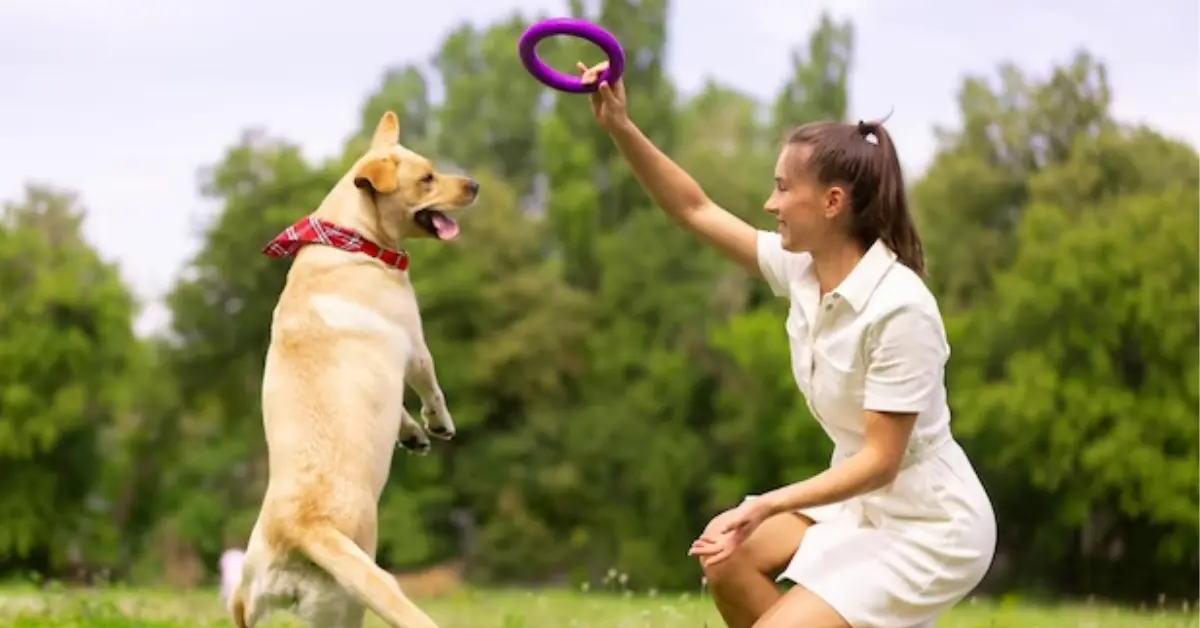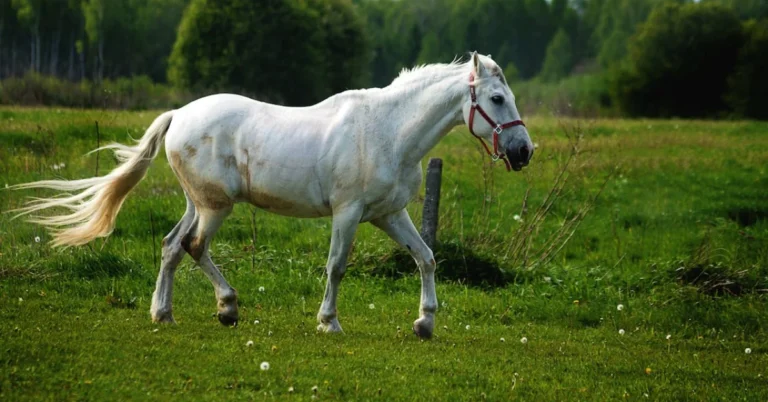Bringing a new canine companion into your life is undoubtedly an exciting experience. However, that sweet-faced puppy will soon grow into an adult dog with energy, intelligence, and behavior that needs guidance. Providing proper training creates structure, builds trust between you and your dog, and makes cohabitation smooth for all household members, including children.
With positive reinforcement methods growing exponentially in popularity amongst professional dog trainers, teaching your new pup desirable habits has never been more humane or effective. As you embark on this rewarding journey with your furry friend, keep these top 10 dog training tips in mind.
Establish Yourself as the Leader of the Pack
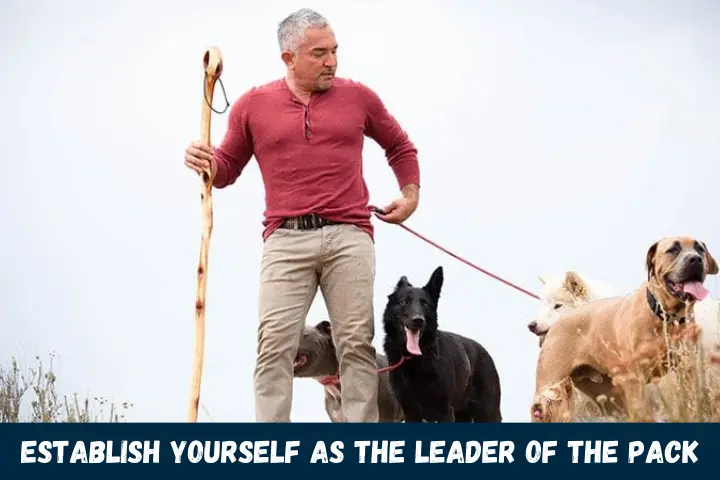
In the wild, dogs live in tight hierarchical packs where each member has a place. As domesticated canines, pet dogs view their human caretakers as leaders. Establishing a gentle authority reinforces to your pup that you are in charge and that they should respect your direction.
As pack leader, you set schedules, provide affection and resources like food and toys, and give guidance. Maintaining a calm, assertive energy when interacting with and training your dog helps them understand their place in your human pack. Movements and voice tones should be neutral, without anger or nervous energy. Reward calm dog breeds with affection and treats when they display deference and follow commands.
Learn the Power of Positive Reinforcement
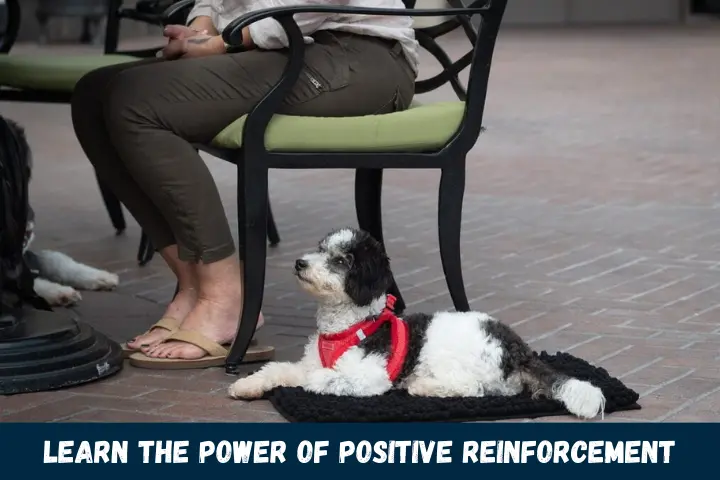
Current professional dog training philosophy champions positive reinforcement as the most effective method. This means bypassing punishment, corrections, and dominance tactics and instead motivating through generosity and approval.
Studies show that using rewards for desired behavior leads to better retention and more consistent results. So put down the choke chain and keep some tasty treats on hand. Offer up delicious incentives like bits of chicken, cheese, or commercial reward treats every time your dog obeys a cue. Verbal praise is also key. A happy tone coupled with frequent petting and words like “Good dog!” builds your pup’s confidence and strengthens your bond.
Perfect the Art of Paying Attention
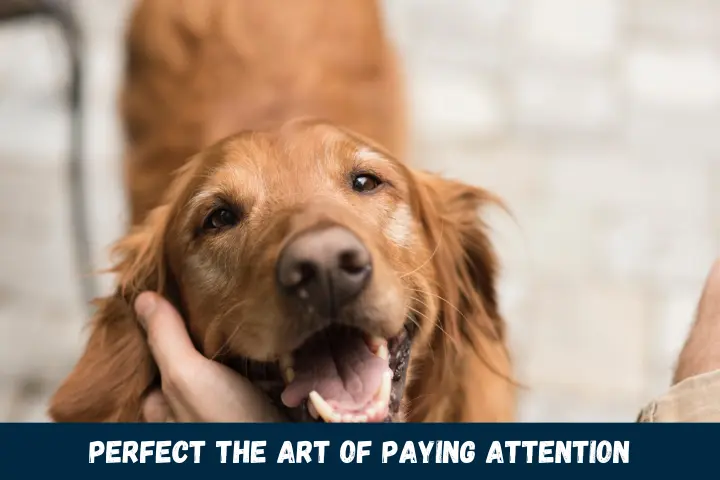
A key component of training success is capturing and keeping your dog’s focus amid environmental distractions. This teaches impulse control and concentration. Start indoors in a low-distraction room. Show your pup a coveted toy or treat, then close your hand around it. Give the attention cue, which can be sustained eye contact, a hand target touch, or simply focusing on your face.
Once you have their attention, mark and reward. Lengthen attention duration in small increments, working up to several minutes. Randomly change up rewards to prevent boredom. Graduate to more challenging areas like the backyard, then a park. Solid attention skills make learning new behaviors easier.
Lead the Way with Loose Leash Walking
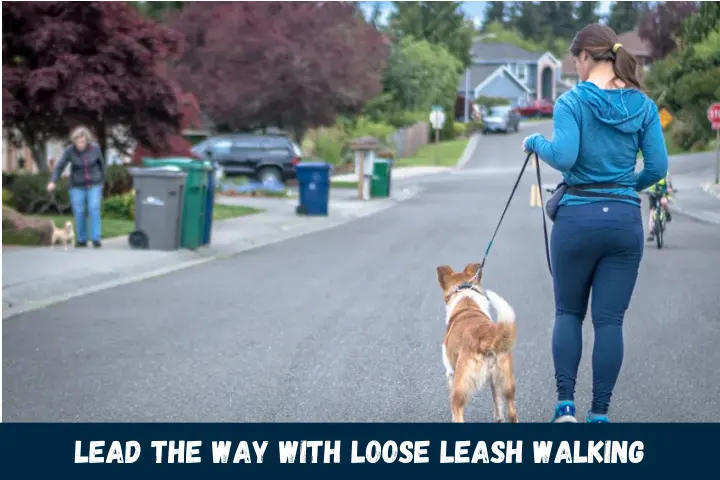
Pulling forward is a common leash walking challenge, even for adult dogs. This stems from excitement, distraction, or assertion of control. Instead of yanking back on the lead or collar, be proactive. Put a reward treat by your thigh and walk forward while giving the “Heel” cue. Praise and treat each time your dog chooses to walk beside you without pulling.
Gradually lengthen the duration between treats to random intervals so your dog doesn’t just heel in anticipation of food. Breaking attention to sniff or potty is ok on your terms, but move forward again before treats resume. Consistency resolves leash pulling faster than corrections.
Introduce and Reinforce Dog Training Basics
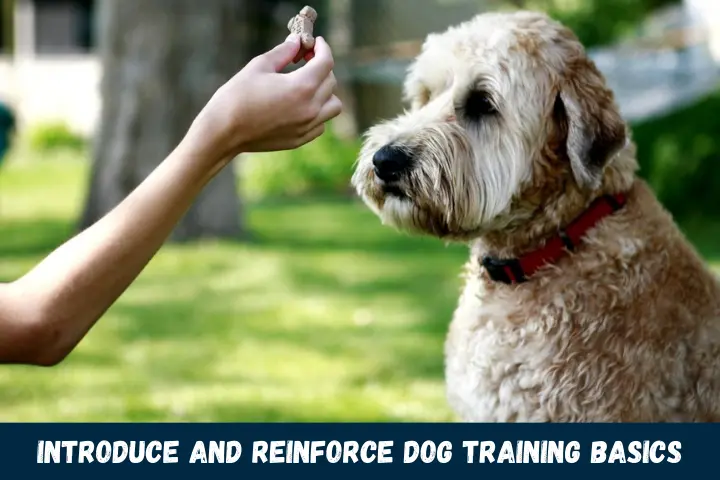
While advanced skills like competitive dog sports or complex service tasks come later down the road, starting with primary basics lays a solid foundation upon which to build future training. Core basics for all dogs include:
- Sit – Hold a treat overhead until your dog sits, then reward. Use a hand signal simultaneously, like a flat palm raised. Phase out the lure and only reward once seated.
- Stay – Tell your dog to sit. Show your palm and say “dog to Stay”, take a few steps back, then return and treat. Gradually increase distance and duration before rewarding longer stays.
- Come – Call your puppy and encourage him to run to you for a reward. Start small, in a confined room, then practice with more distractions present.
- Down – Show the treat and move it down towards the floor as you lower your hand. Lure down, mark, treat, and couple with a hand signal like a flat palm angled downwards.
- Leave It – Put a treat on the floor but cover it with your hand. Say “Leave It” then lift your hand. When your dog stops pawing for access, mark and reward from your other hand.
Mastering these five basics paves the way towards polite walking, greeting guests without jumping up, waiting calmly instead of bolting out doors, and ignoring tempting objects like food dropped on the floor. They also help achieve future goals like off-leash reliability, contributing to how to calm a dog down effectively.
Set Schedules to Promote Desired Household Conduct
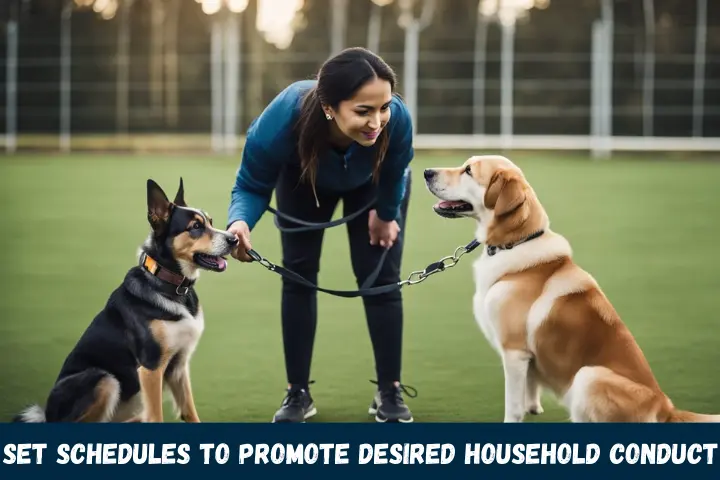
Dogs thrive on routine and structure. Implementing a schedule is an easy yet highly effective dog training technique. Your pup will rapidly learn that certain desirable behaviors coincide with certain predictable times. For example:
- Take your dog out first thing in the morning to reinforce timely potty habits.
- Feed your dog at the same times every day to encourage bathroom regularity.
- Have set times for high energy play sessions and winding down with a puzzle toy or stuffed Kong.
- Stick to a standard duration for walks so your dog knows what to expect.
Adhering to a timeline offers your dog stability. They gain confidence by grasping which types of activities coincide with different parts of the day. Consistent schedules also promote better relaxation, appetite cues, and bathroom habits.
Stop Unwanted Barking in Its Tracks
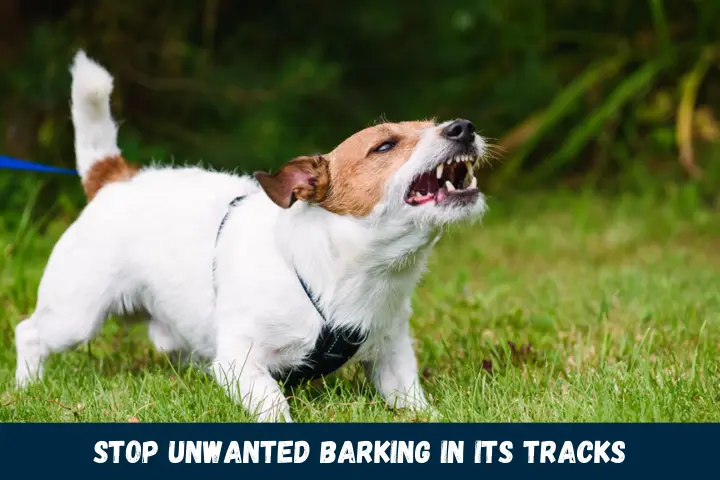
Few problems frustrate pet parents more than incessant, nuisance barking. Thankfully, curbing this common challenge merely requires recognizing why your dog barks and applying training strategies centered on those triggers. Start by identifying what prompts the undesirable vocalization, like fence line activity, visitors, or boredom when left alone. Then utilize protocol customized to the trigger. For example:
Desensitization – Gradually expose your barking dog to the inciting stimulus from a distance at which they remain quiet. Reward calm behavior, then decrease distance in increments as they succeed.
Teach Quiet – Show a reward and give a cue like “Quiet” when your dog barks. When they pause to sniff the treat, praise and give them the reward. Increase duration of silence before treating over time.
Enrichment toys – Provide mentally stimulating puzzles like treat-release toys when you leave home to deter barking from boredom and stress.
Redirect Energy – If your dog barks due to excessive energy, increase structured exercise and training sessions to drain that exuberance in more positive ways.
While eliminating barking altogether is unrealistic, these customized training strategies reduce it to more tolerable levels through patience and diligence.
Curb Jumping Up with Proper Greeting Manners
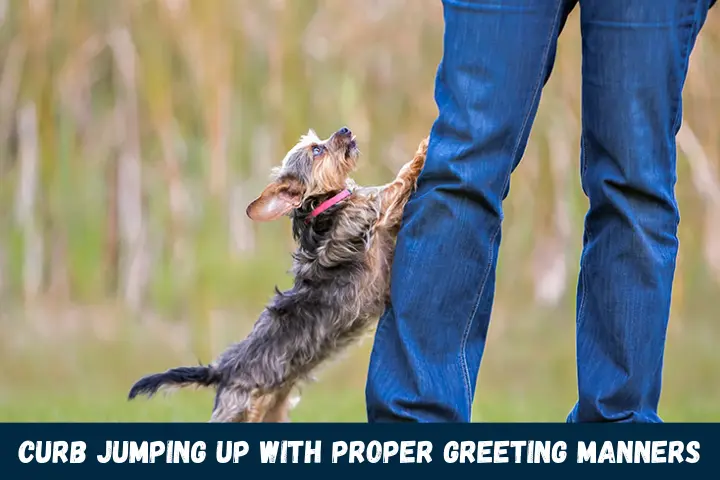
Jumping on people is a common issue stemming from uncontrolled excitement. While sweet and innocent to your dog, this behavior poses risks and annoyances to humans.Instead, teach your dog to sit politely when saying hello.
Ask guests to turn away and avoid eye contact or touching your dog until seated calmly with four paws on the floor. Have treats ready to reward and frequently reinforce the desired sitting behavior when people arrive or you return home. Consistency from everyone is vital, as is completely ignoring attention-seeking jumping puppies.
With time, your dog will learn that sitting earns affection but jumping up does not. For extremely enthusiastic jumpers, keeping your dog tethered to furniture with a leash when newcomers enter allows close monitoring and quick redirection.
Stop Counter Surfing in its Tracks
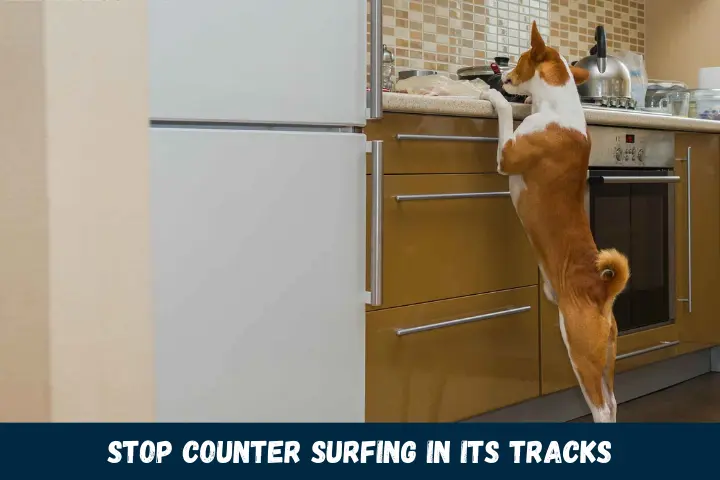
Dogs love forbidden food tantalizingly left on countertops and tables. With lightning-quick sneaky paws, they manage to snag unattended edibles in seconds. While cute, this counter surfing poses choking hazards and diet disruption. Stop it using management and training.
First, dog-proof your home. Never leave food or other enticing items out where your dog can grab them. Use baby gates, exercise pens, or crate your pup when you cannot actively supervise. Teach solid “Leave It” and “Off” cues with positive reinforcement training methods. Practice these impulse control commands frequently, starting with low distractions then building difficulty.
With diligence, your dog will learn that keeping paws on the floor instead of countertops brings rewards like treats and praise. They will choose restraint over sneaking forbidden snacks.
Say Goodbye to Separation Anxiety
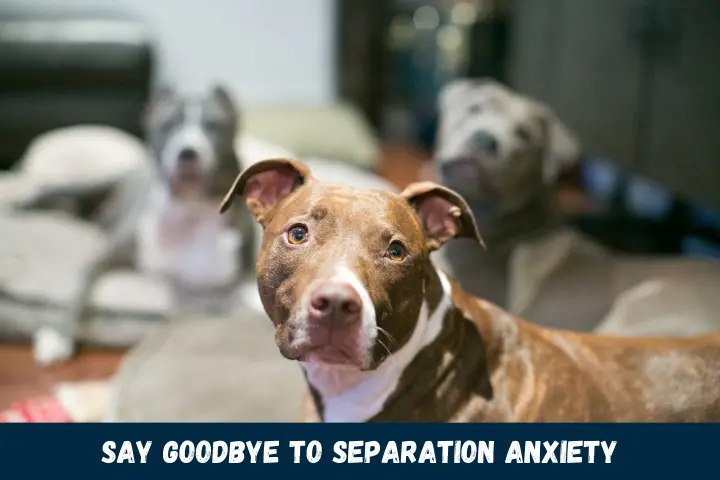
Dogs are highly social pack animals. Some become so distressed when left alone that excessive vocalization, property destruction, and even panic result. While tedious, separation anxiety is treatable through customized training regimens and management strategies. These include:
Desensitization – Gradually condition your dog to accept your departure as a normal event instead of a tragedy. Start with very brief exits that end before anxiety escalates too severely. Lengthen absences incrementally over weeks as your dog builds confidence.
Enrichment –Make alone time less distressing by offering stuffed puzzle toys, music, calming pheromones, or D.A.P. diffusers to alleviate stress before leaving. These provide distraction and comfort.
Exercise Beforehand – Ensure your dog feels pleasantly tired by providing adequate exercise beforehand. A brisk long walk, jog, or game of fetch helps them approach alone time in a relaxed state, less prone to stress. Just don’t overdo it right before separation.
Positive Associations – Randomly reward your dog with a stuffed Kong or safe chew toy only when you leave. This builds positive connotations with your exit instead of only despair.
While the path to confident alone time varies, diligent training and customized management strategies reduce separation stress substantially. Reach out to a vet behaviorist for personalized treatment plans in extreme cases.
Stop Digging in its Tracks
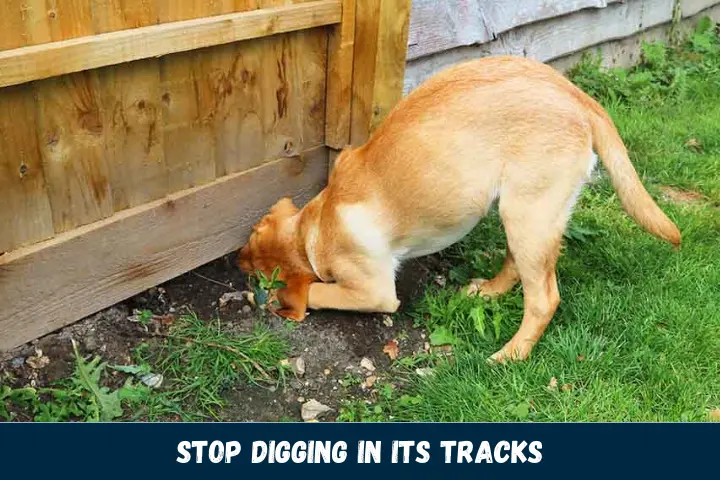
Few behaviors dismay homeowners more than holes dug amongst carefully cultivated landscaping or lawn. To curb digging:
Identify the trigger – Dogs dig to bury food or toys, escape due to anxiety, cooling off, or sheer boredom. Pinpointing the reason lets you custom-tailor solutions.
Meet needs appropriately – If your dog digs to stash chew items or shelter from heat, provide an acceptable outlet like a sand box for digging on cue. Shovel heaps of praise onto this sanctioned activity.
Manage the environment – Block off tempting digging sites like mulch beds. Supervise outdoors to quickly interrupt and redirect with a toy when digging attempts occur.
Train impulse control – Reinforce “Leave It” and “Drop It” commands until your dog reliably curbs the digging impulse for a reward when instructed, even when not directly supervised.
With observation, management, and training consistency digging damage in yards slowly resolves over time without extreme measures like shock collars or physical punishment.
Final Thoughts
Whether you are striving for a well-mannered pet at home or the next champion show dog, dog training is a lifelong, evolving journey. Measure your progress in months and years instead of days and weeks. There will be setbacks, plateaus, and moments of frustration amid the pride and celebration of goals met. Appreciate the small daily victories as you travel the winding road to better behavior together with your loyal companion.
Remember that at its core, dog training simply provides helpful communication, boundaries, and coping skills between species inhabiting the same home environment. Approached positively, it builds an unbreakable cross-species bond forged on trust, respect and shared adventures. So embrace patience, utilize treats generously, and let training enhance your daily life journey with the special canine by your side, today and always.

